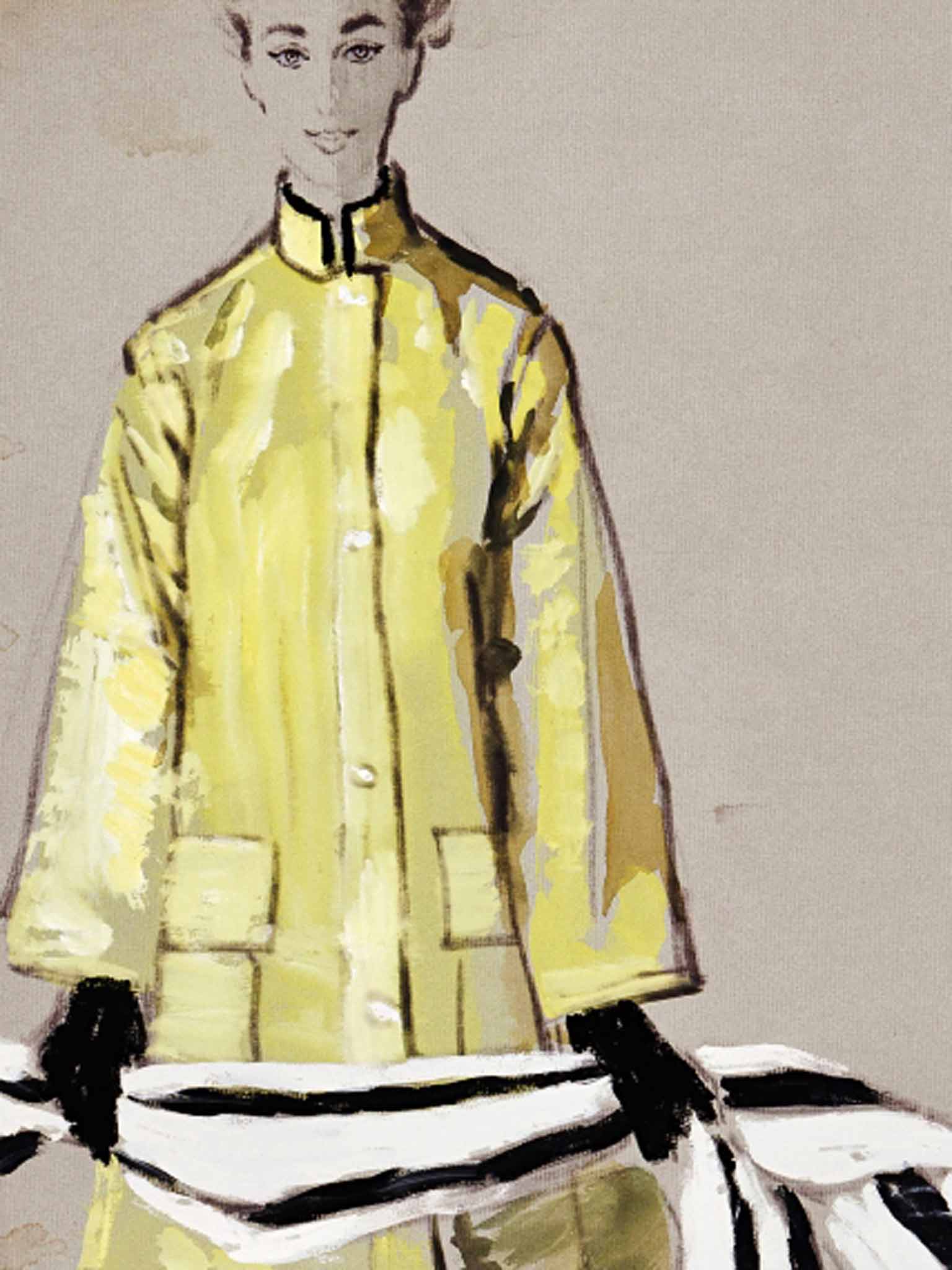Brian Stonehouse: from spy to fashion illustrator
British spy Brian Stonehouse survived five concentration camps and went on to become a fashion illustrator for 'Vogue'. Anna Brady admires a new exhibition of his work

Your support helps us to tell the story
From reproductive rights to climate change to Big Tech, The Independent is on the ground when the story is developing. Whether it's investigating the financials of Elon Musk's pro-Trump PAC or producing our latest documentary, 'The A Word', which shines a light on the American women fighting for reproductive rights, we know how important it is to parse out the facts from the messaging.
At such a critical moment in US history, we need reporters on the ground. Your donation allows us to keep sending journalists to speak to both sides of the story.
The Independent is trusted by Americans across the entire political spectrum. And unlike many other quality news outlets, we choose not to lock Americans out of our reporting and analysis with paywalls. We believe quality journalism should be available to everyone, paid for by those who can afford it.
Your support makes all the difference.It is a plot worthy of a Sebastian Faulks saga – the English spy captured during the Second World War, who survives concentration camps to reinvent himself as a darling of the New York fashion world. Such is the story of Brian Stonehouse MBE, whose fashion illustrations are the subject of an exhibition opening in London this week.
A young art graduate and aspiring illustrator, Stonehouse joined the Royal Artillery in 1939 but, a fluent French speaker, he was rather wasted on his initial posting to Orkney. However, in 1941 his commanding officer recommended him for the Special Operations Executive (SOE), secret agents trained to infiltrate Nazi Europe.
The following July, Stonehouse was disguised as "Michel Chapuis", a French art student, and parachuted into France with a radio hidden in his paint box. But after just a few months of transmitting information home, he was arrested.
He was a prisoner for the next two and a half years, often tortured and placed in solitary confinement and incarcerated in three French prisons and five concentration camps, culminating in Dachau. While in Natzweiler extermination camp, he recognised four well-dressed women being marched to their deaths in the crematorium. Haunted by their faces, a year later he was asked to sketch them – his drawings matched the photographs of four missing SOE agents.
Remarkably, Stonehouse survived the war and was a witness at the War Crimes Tribunals and in 1946 returned to Dachau with his sketchbook to record the aftermath, drawings that are now in the Imperial War Museum.
However, his life changed dramatically following a chance encounter during the preparation for the trials with Harry Haller, a socialite American major. Haller was instantly taken with Stonehouse and they started a relationship. Haller supported his move to America in 1946 where he recommended Stonehouse to his friends as a portrait painter. His work caught the eye of Jessica Daves, an editor at Vogue, who thought his style perfect for fashion. In 1952, Stonehouse was the first new illustrator to be taken on by Vogue since 1939. Under Daves as editor-in-chief, he worked alongside the much better known "Eric" (Carl Erickson) and René Bouché.
This was a golden era for fashion illustration but when Diana Vreeland took over at Vogue in 1962, it was largely replaced by photography and Stonehouse left that autumn. While he continued to paint both creatively and commercially, his heyday as a fashion illustrator was over. He was commissioned in 1981 to paint the Queen Mother, they became good friends and his career as a portraitist was briefly revived. In 1998 Stonehouse died of a heart attack.
Two years ago a group of his illustrations turned up in a UK auction house and were eventually bought by Boston collector Frederic A. Sharf. "I knew nothing of his story but when I saw them I thought, this guy is good," says Sharf. "I went to the Imperial War Museum, who had some information but not much. They put me in touch with Brian's brother, Dale, who had a garden shed was full of boxes containing all that was left of Brian Stonehouse."
Dale gave the boxes to Sharf, who pieced together the letters and memorabilia they contained into a book, Brian Stonehouse: Artist, Soldier, War Hero, Fashion Illustrator.
At a glance Stonehouse's work is fluid and decorative, but essentially much like any other fashion illustrations of the era. But to look again with a knowledge of the horrors he witnessed through the war, gives the drawings a new poignancy, the languid models in their couture threads so far removed from those four doomed women whose image haunted him in 1944. µ
'Brian Stonehouse – Fashion Illustrations' is at Abbott and Holder Ltd, London, until 23 December. Anna Brady is Diary Editor at 'Antiques Trade Gazette'
Join our commenting forum
Join thought-provoking conversations, follow other Independent readers and see their replies
Comments